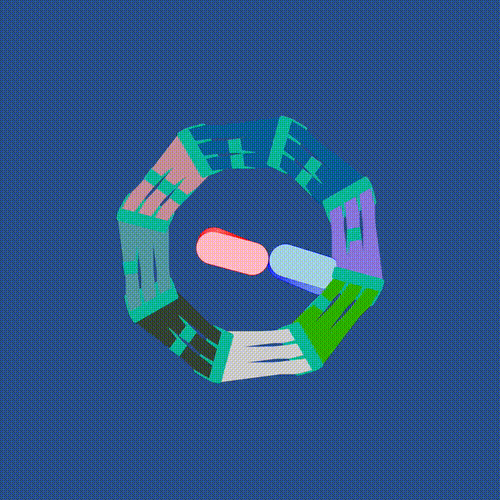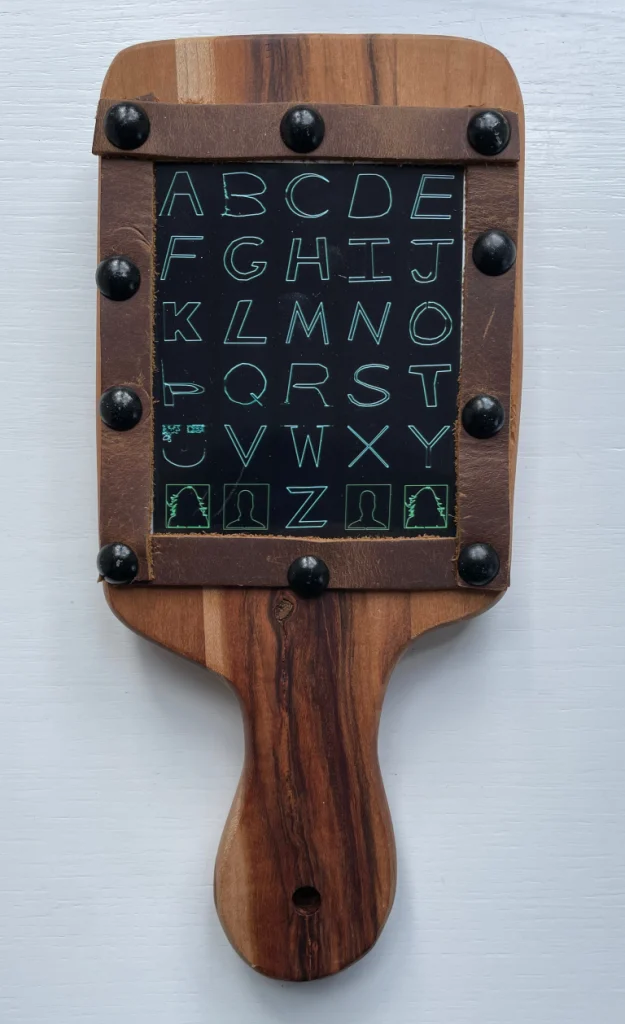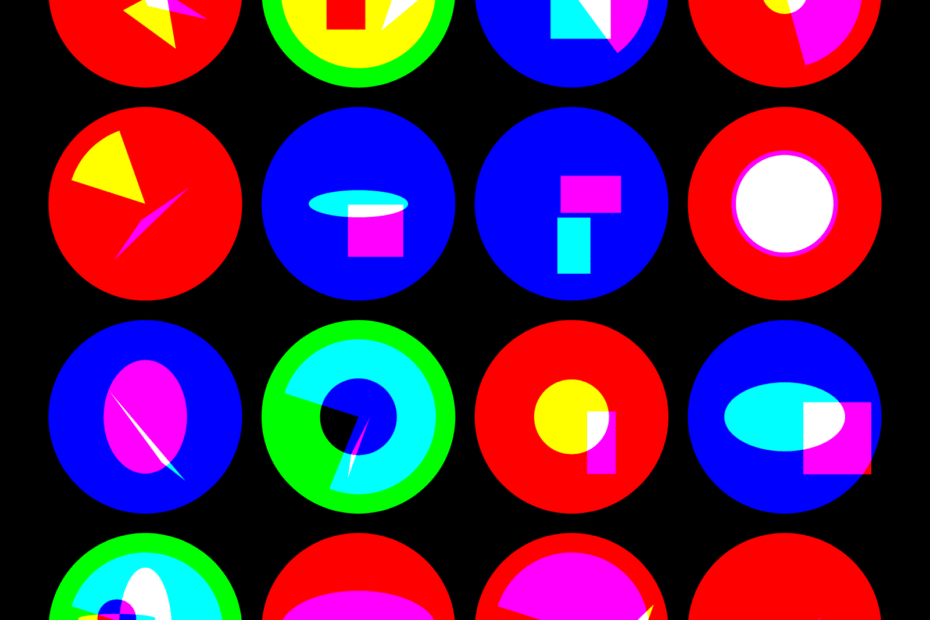Introduction: Beyond the Speculation
When NFTs first captured the public imagination, the conversation was dominated by market hype, dizzying auction prices, and speculative fervor. It was easy to dismiss the entire phenomenon as a fleeting, volatile trend. Yet beneath that noisy surface, a serious and mature art movement has been quietly taking root, using blockchain technology not for speculation, but to explore profound questions about creativity, ownership, and the very nature of reality.
This evolution is moving faster and in more unexpected directions than many realize. Far from being confined to our screens, digital art is forging deep connections with the physical world, establishing its own historical canon, and finding its way into the archives of the world’s most prestigious institutions. Using the work of pioneering artist Bård Ionson and the world’s leading generative art platform, Art Blocks, as our guide, here are four surprising developments that reveal not just where this movement is going, but how it’s building a legacy designed to last forever.
1. The Physical World is Becoming the Key to Digital Art
In a counter-intuitive twist, one of the most significant trends in digital art is its increasing integration with the physical world. While NFTs are often perceived as ephemeral, artists are now creating work where a tangible object is not just a byproduct, but the essential key to its digital counterpart.
Bård Ionson’s new interactive installation, set to premiere at the Art Blocks Marfa Weekend, is a prime example of this paradigm shift. In a move rich with art-historical resonance, Ionson has trained a real-time Generative Adversarial Network (GAN) on his personal collection of 1,500 film and digital photos of animal bones, echoing Georgia O’Keeffe’s iconic desert motifs. Visitors interact with the AI, co-creating a unique visual that intentionally blurs the line between reality, photographic reality, and an artificial reality. They then receive a physical, signed, archival print of their creation. This print is more than a souvenir; it contains an embedded URL which is the only way to mint the artwork as a permanent NFT.
This subverts the typical process, making a tangible object the gateway to its immutable on-chain twin. It’s the culmination of a career-long obsession for Ionson, who has consistently explored the digital-physical bridge, notably by creating and mailing physical versions of his ‘Color Magic Planets’ NFTs to collectors.

“My work has always been a tango between human imagination and machine generation. With this piece, the viewer steps onto the dance floor. The installation explores the distortion between a fleeting digital moment and a permanent physical memory. The print you hold isn’t just a receipt; it’s the tangible bridge to an immutable digital soul, a proof-of-experience that questions where the artwork truly lives—in the code, on the wall, or on the chain.”
— Bård Ionson
This development is significant because it masterfully bridges the digital-physical divide. It offers a new form of “proof-of-experience,” grounding a fleeting digital interaction in a lasting physical reality and challenging our core assumptions about what makes an artwork authentic.
2. An Art Movement’s “Founding Era” Just Reached a Historic Milestone
Every major art movement eventually becomes aware of its own history, moving from a period of explosive creation to one of curation and legacy. For on-chain generative art, that moment is now. Art Blocks, the world’s leading platform for the medium, has announced a historic milestone: the conclusion of the “Art Blocks 500.”
This initiative designates a finite collection of 500 flagship projects that have defined the platform’s foundational era, from its inception in 2020 through 2025. This curated collection is set to formally conclude by November 2025. Consequently, the upcoming 5th anniversary Art Blocks Marfa Weekend is being framed as the “final major community celebration” of this defining period.

Artists like Bård Ionson are veterans of this era, with acclaimed projects like ‘Color Magic Planets’ and ‘8’ forming part of this historic collection. The decision to cap this foundational series is a powerful signal of a maturing art movement. It is a conscious act of canon-building, a movement drawing a line around its own foundational period to declare, “This is our history; this is what will be studied.”
3. Digital Art is Entering the World’s Most Prestigious Libraries
Nothing counters the narrative of digital art as a fleeting fad more powerfully than institutional validation. In a landmark achievement for the medium, the work of generative artists is now being collected and preserved by some of the world’s oldest and most respected cultural archives.

Bård Ionson’s piece, ‘Battledore’, has officially entered the permanent collection of the University of Oxford’s Bodleian Libraries, an institution whose collection dates back to 1602. ‘Battledore’ is a complex hybrid artifact: it is a physical piece, it features an augmented reality layer visible through the Artivive app, and its unique provenance is permanently tracked on the Ethereum blockchain as an NFT. This may well be the first piece of “CryptoArt” to enter the Bodleian’s storied collection.
“When the Books On Books Collection is donated to the Bodleian Libraries, the chain of digital ownership will extend by one more block. The wallet in which the Battledore NFT and financial terms, if any, reside will transfer to the Bodleian with a digitally secure chain of custody and provenance.”
— Robert Bolick, Curator
This acquisition is a watershed moment. It confers profound credibility upon blockchain-tracked art, demonstrating that major cultural institutions are recognizing its long-term historical and artistic significance. They are not just collecting digital files; they are acquiring the entire, technologically-secured history of an artwork, preserving it for the future.
4. The Artwork is Now Being Preserved On the Code Itself
A fundamental question has always haunted digital art: where does it actually “live”? If a company’s server goes down or a platform disappears, is the art lost forever? A revolutionary approach to preservation now provides a powerful answer: the art can live directly on the blockchain itself.
Art Blocks recently announced its initiative for “True On-Chain Preservation,” a fundamental shift in how digital art endures. In this model, everything needed to create and display the artworks—from the artist’s core script to all supporting code libraries—lives directly on the Ethereum blockchain.
The implications for longevity are staggering. Using only a modern web browser and access to the blockchain, these artworks can be perfectly regenerated “forever, independent of Art Blocks or any other platform.” This is a radical form of decentralized permanence. Unlike digital media stored on fragile company servers or personal hard drives that can fail or become obsolete, on-chain art is designed to outlive its creators and the platforms it was born on, offering a profound and elegant solution to the persistent problem of digital preservation.
Conclusion: The Next Chapter for Creativity
Generative art, powered by blockchain technology, has evolved far beyond its speculative beginnings. The developments we see today are not disparate trends but a deliberate, multi-pronged effort by an entire artistic movement to solve its own existential challenges. It is meeting the challenge of physicality by forging tangible links to the real world; the challenge of historical legitimacy through conscious canon-building; the challenge of institutional acceptance by entering the world’s great libraries; and the ultimate challenge of permanence by embedding its very code onto the blockchain.
This is a movement securing its own legacy in real time. As the lines between a line of code, a physical object, and an artistic brushstroke continue to dissolve, we are left to wonder not just what art will look like in the future, but how it will endure.
